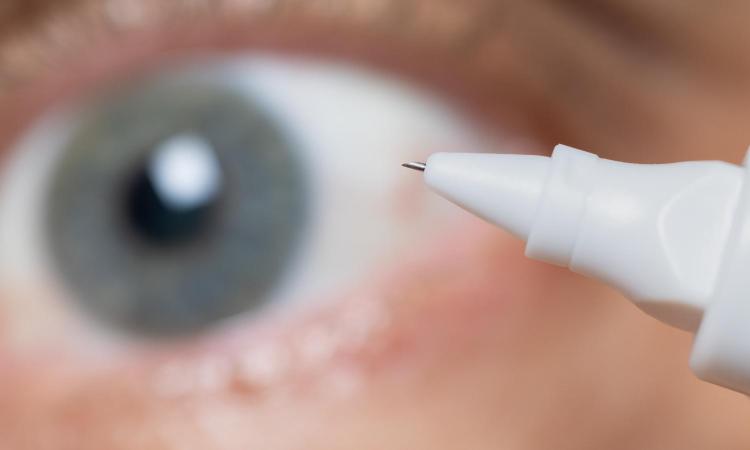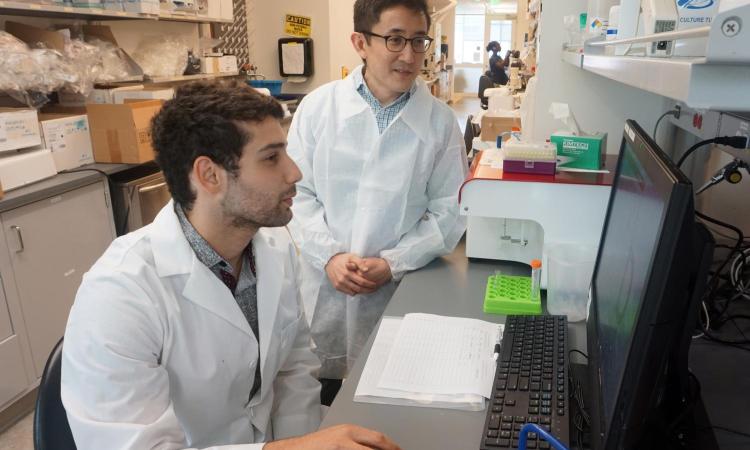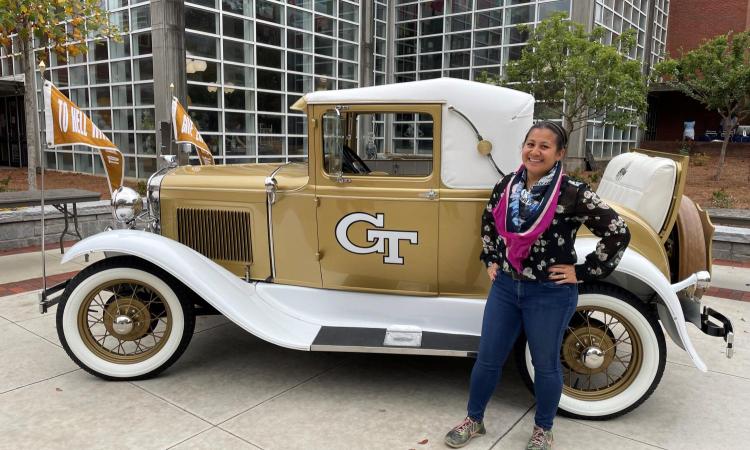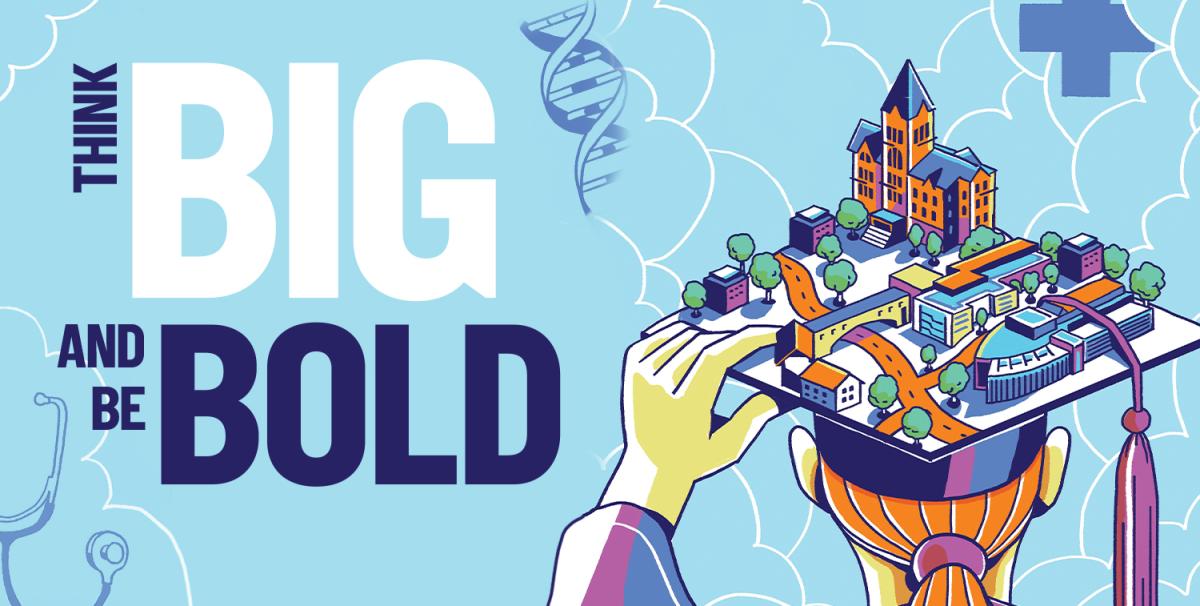
(text and background only visible when logged in)
25 years after creating a powerhouse program between a public and private university, Georgia Tech and Emory’s biomedical engineering department looks ahead to its next chapter.
(text and background only visible when logged in)
Millicent Warner wants to be a doctor. So when the time came to consider colleges, Warner knew she wanted to get the best possible preparation for medical school.
Engineering wasn’t on her radar — until she bumped into a parent at her sister’s high school graduation who worked in drug development at Emory University. He told her point-blank: “If you want to go to med school, get a biomedical engineering bachelor’s degree in the joint Georgia Tech-Emory program.” Then, he said, “You’re set.”
That was all the convincing she needed; the path now seemed clear. And three years into her studies, Warner said she found in the Wallace H. Coulter Department of Biomedical Engineering at Georgia Tech and Emory University just what she was looking for.
It was a rough start to be sure. Warner was among the students who started college in the depths of the coronavirus pandemic. She spent that first year mostly at home 40 minutes north of campus and not feeling engaged. She decided to change all that in her second year. She studied at Georgia Tech-Europe. She found work in a research lab. She started to volunteer at Emory Hospital Midtown. This fall, she’s worked on a Capstone Design project with physicians at Mayo Clinic.
“I had no clue what to expect when I started BME at Tech,” Warner said. “I’m glad I took that blind leap of faith. I feel like engineering, for a lot of people, is this far-off, what-is-it thing. It’s a widespread field, and you can take it in a lot of directions, which can lead to confusion. But once I got into BME at Tech, two things really stuck out to me: It was very process-based, and it was a very creative atmosphere.”
For someone who hadn’t thought much about engineering, it turned out to be something Warner loved. She’s always been a hands-on person, someone who enjoyed stepping in and fixing or tinkering with things. In other words, she loved the process. And she loved that it was baked into the BME curriculum from her very first semester, when she took BMED 1000, Introduction to Biomedical Engineering.
“Our instructors have a very clear — and very cohesive between classes — focus on not caring about the product that you’re making but caring about the problem that you’re trying to solve,” Warner said. “I felt my way of thinking change. It became more than, will it work or not; it became more creative, more about, what are we really trying to solve here.”
Warner’s experience is just what the architects of the Coulter Department had in mind. They were innovating from the beginning — first, by formally uniting a private medical school and a public engineering college in a joint department, and then by adapting the problem-based learning used in medical schools to engineering education.
Problem-based learning isn’t about taking in information and being tested on it. Instead, students get real-world problems — complex, undefined, messy — and have to figure out solutions. They don’t know everything they need to, and they learn as they go. As Warner has experienced, grades are not about the end product; they’re about the process.
And just like the methodical way faculty members in Coulter BME reimagined engineering curriculum, they’ve also built a powerhouse research program with more than $40 million in research awards annually. Graduate students flock to the Department because they can find mentors to help them pursue virtually any direction they wish, drawing from two campuses of resources to create their own unique experience.
Twenty-five years after its founding, the Coulter Department is perennially one of the nation’s highest-ranked programs — currently the top BME undergraduate and graduate program on the widely watched U.S. News & World Report Best Colleges lists.
Coulter BME also has become the largest and most diverse program of its kind in the nation, boasting 1,500 students and more than 70 tenured and tenure-track faculty members. The Department annually graduates more women and underrepresented minorities than any other BME program in the country.
It’s a remarkable run in 25 years. And it’s just the beginning, if you ask Wallace H. Coulter Department Chair Alyssa Panitch.
“There’s such a great foundation in education, a great culture, and so many really talented researchers that it gives me the opportunity to think big and be bold,” said Panitch, who became the fifth permanent department chair in 2022. “We can start to take things to the next level: How do we double our research dollars? How do we start thinking about solving the world’s next problems? We’re bringing the faculty, staff, and students together and saying, ‘OK, what do we think the really impactful things are to go after and how do we get there?’”
Answers to those questions and more will shape the next quarter century for the Coulter Department.
It’s a future where maturing technology in artificial intelligence and synthetic biology will unlock new approaches to health and medicine. Where a greater understanding of the individual differences that lead to the success or failure of therapies for intractable diseases will open pathways to truly personalized medicine. Where, from Panitch’s perspective, the pace of impact and discovery in Coulter BME will only accelerate.
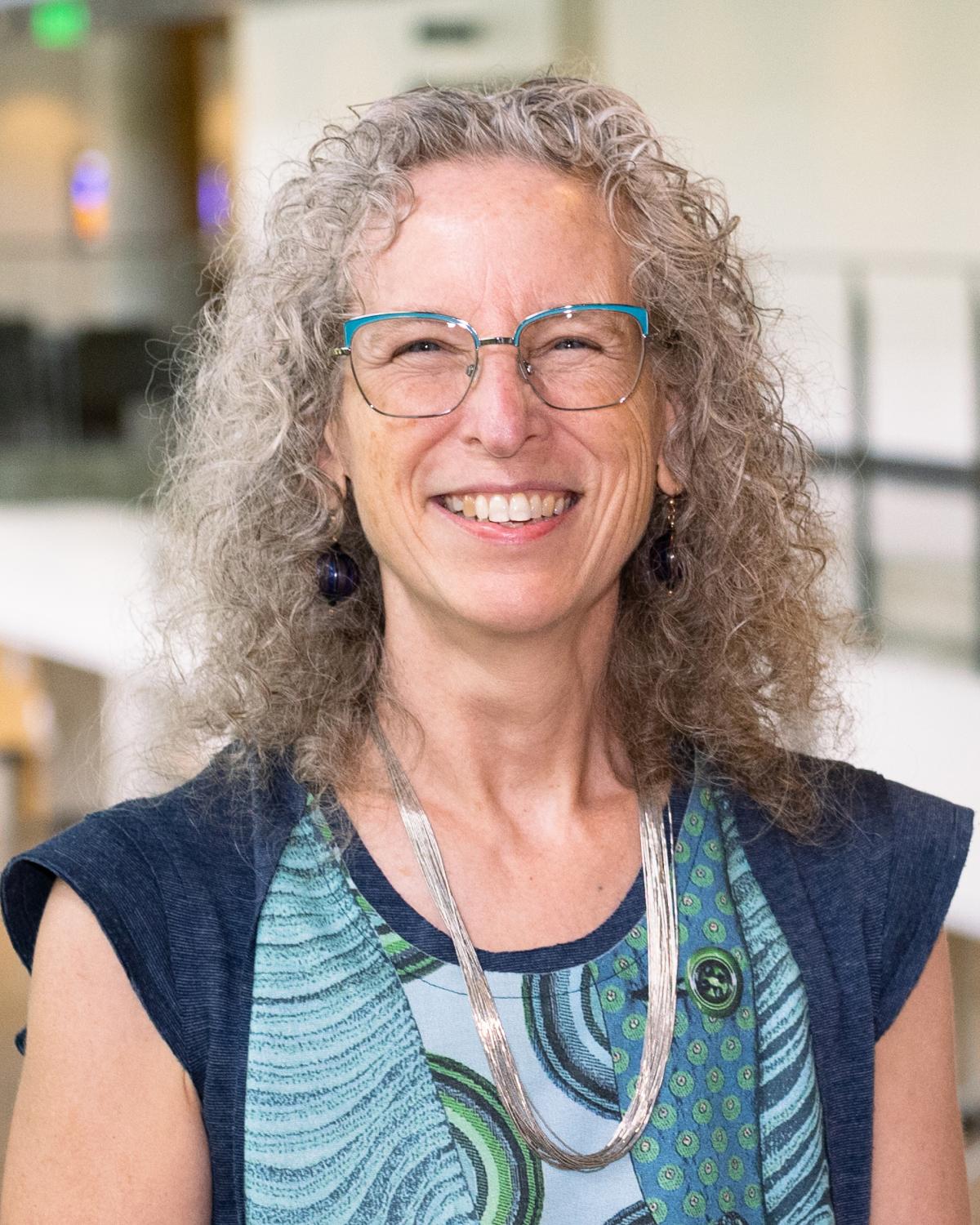
BME Chair Alyssa Panitch (Photo: Candler Hobbs)
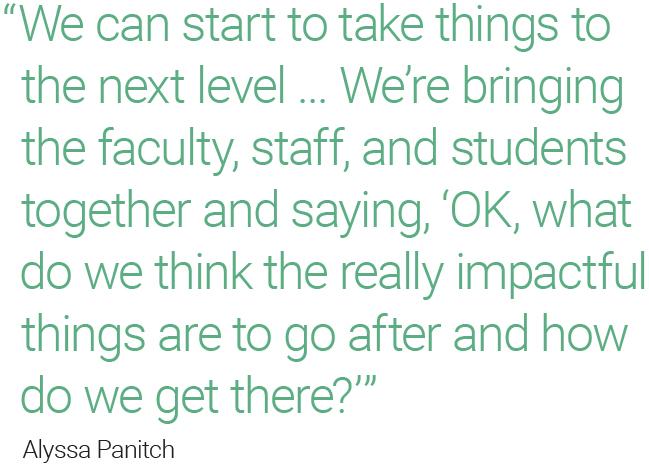
Foundations
Georgia Tech and Emory are very different places. One, a public university and engineering powerhouse. The other, a well-respected private university with a top liberal arts program and one of the nation’s most comprehensive academic healthcare systems.
But both share a mission centered on people: at Emory, to “create, preserve, teach, and apply knowledge in the service of humanity,” and at Georgia Tech, “developing leaders who advance technology and improve the human condition.”
Back in the late 1980s, leaders at both institutions saw an opportunity in the other campus to complement their strengths and have real impact. That led to the first formal relationship, a Biomedical Technology Research Center with a seed grant program designed to nurture research across the Downtown Connector.
As Regents’ Professor Emeritus Ajit Yoganathan put it some years later: “That was our venture into the first phase of the Georgia Tech-Emory relationship on a formal basis. And I’m not even sure if ‘venture’ is the right word. Maybe ‘adventure’ is correct, because we were really trying out something new.”
The research center and seed grants led to more funding from the Whitaker Foundation and the formation of an interdisciplinary bioengineering Ph.D. program, which quickly became one of the best in the country under Yoganathan’s guidance. By the mid 1990s, Emory and Georgia Tech leaders saw BME departments sprouting up across the country and started talking about a new collaboration: a joint academic department. They recruited Johns Hopkins University engineering dean Don Giddens back to Georgia Tech to lead the effort.
In September 1997, the Emory Board of Trustees signed off, followed quickly by the University System of Georgia Board of Regents. The first students enrolled in 2000, and the following year, the Department was named for Wallace H. Coulter, a pioneer in automated cell analysis and hematology, after his namesake foundation committed $25 million to support the burgeoning program.
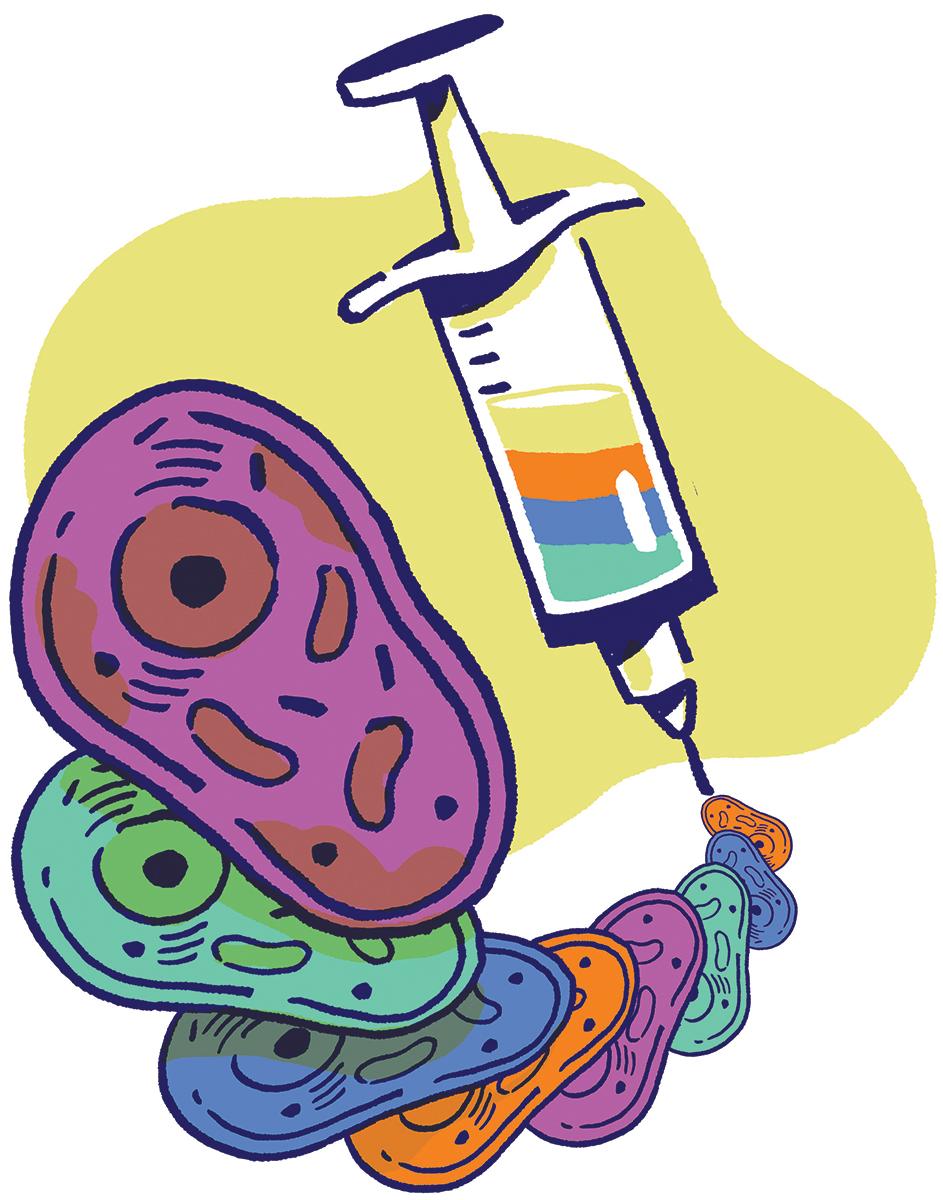
Panitch credited the visionaries at both institutions for establishing a culture of innovation from the very beginning that has allowed the Department to grow into a national powerhouse.
“The strength of the Emory School of Medicine, the strength of Georgia Tech, the drive for people to become biomedical engineers, and the pull from society for improved healthcare — all of that has allowed us to grow,” Panitch said. “Along with a lot of forward thinking from previous leaders.”
Now it’s Panitch’s turn to leverage the collective power of the Department’s students, faculty, and staff and focus the resources of two campuses to set the stage for what comes next.
Solving the World’s Next Problems
AI seemingly has started to disrupt every industry with powerful new ways to interpret and extract meaning from data. Synthetic biology approaches are enabling scientists to engineer new biological systems and redesign and harness natural systems to fight and monitor disease or model human physiology. Both are areas where technologies have been maturing for decades — and areas where Panitch and her faculty colleagues think the Coulter Department is poised to lead.
One of Coulter BME’s strengths, Panitch said, is the breadth of research happening in the Department’s labs. From cardiovascular engineering to bioinformatics, immunoengineering to biomedical imaging and instrumentation, the Department has built a stable of expertise across a wide area.
Panitch wants to draw from that strength to lay down a marker in AI for health and synthetic biology, areas she called the “next frontiers” in BME.
“I don’t want to upend the balance of being good in multiple areas. We know that diverse ideas and tools come together in ways that we don’t anticipate. It’s critical to continue to have that,” Panitch said. “My goal is to maintain our strength in the research we’re doing and also really take off in these areas that we think are the future needs for biomedical engineering, healthcare, and society.”
Melissa Kemp is helping lead the exploration of how Coulter BME can build its reputation in synthetic biology. She said Panitch is savvy for seeing that the area and the Department are at a precipice where the right push can be transformational.
“As a Department, we haven’t really branded ourselves as a hotbed of synthetic biology research. But when we start looking at the various activities people are involved in, there is quite significant research in related areas,” said Kemp, Carol Ann and David D. Flanagan Professor.
Kemp pointed to work developing tissues in the lab that mimic a specific patient’s physiology, allowing researchers to screen the effectiveness of drugs to find the right therapy for that patient. Other work is reengineering the body’s T cells with chimeric antigen receptors (an approach called CAR T cell therapy) to bypass normal signaling mechanisms so they can identify and kill cancer cells more easily.
(text and background only visible when logged in)

(text and background only visible when logged in)
In her own lab, Kemp is looking at a kind of computer-aided design for tissues created from stem cells. The idea is to create multicellular simulations of the tissues that would offer instructions to synthetic biologists of the kinds of biological circuits they need to build to get specific tissue properties. It’s an idea that grew from years of collaborations with tissue engineers across Atlanta institutions.
“Our Department historically has been very good at creating research communities, and once you have people actively engaged with each other, great things happen,” Kemp said.
Those collaborations are happening in AI too — an area where Emory has invested heavily to create its AI.Humanity Initiative and where Georgia Tech has created a new AI Hub to take “Research to the Power of AI.”
That kind of focused community-building to foster unique ideas is just the kind of thing Anant Madabhushi has in mind. He’s helping lead efforts to position the Coulter Department as a leader in leveraging AI to advance healthcare.
“People are doing pockets of great research in this space, but they haven’t really coalesced,” said Madabhushi, Robert W. Woodruff professor in Coulter BME and research career scientist at the Atlanta Veterans Administration Medical Center. “It’s not going to magically happen; we have to be intentional about it and create the opportunity for people to talk, band together, and become a creative community.”
AI techniques can process mountains of data to help researchers uncover patterns or find new avenues of inquiry for diseases from cancer to Alzheimer’s. Researchers are using artificial neural networks to study the brain and other AI tools to help reconnect the brain and body for patients with spinal cord injuries.
Madabhushi’s team has been working on AI models that are tuned for specific populations. A few years ago, they demonstrated an AI approach that predicted prostate cancer risk for Black men better than models that weren’t specific to any population. The work demonstrates the power of AI to tackle big problems and create a future of precision medicine.
“It’s not just going to be using these tools from a diagnostic perspective, but really identifying the treatment response for a given patient with a given disease,” Madabhushi said.
“It’s an extremely exciting area, and I think that we have an opportunity to really carpe diem this, to really seize the day here.”
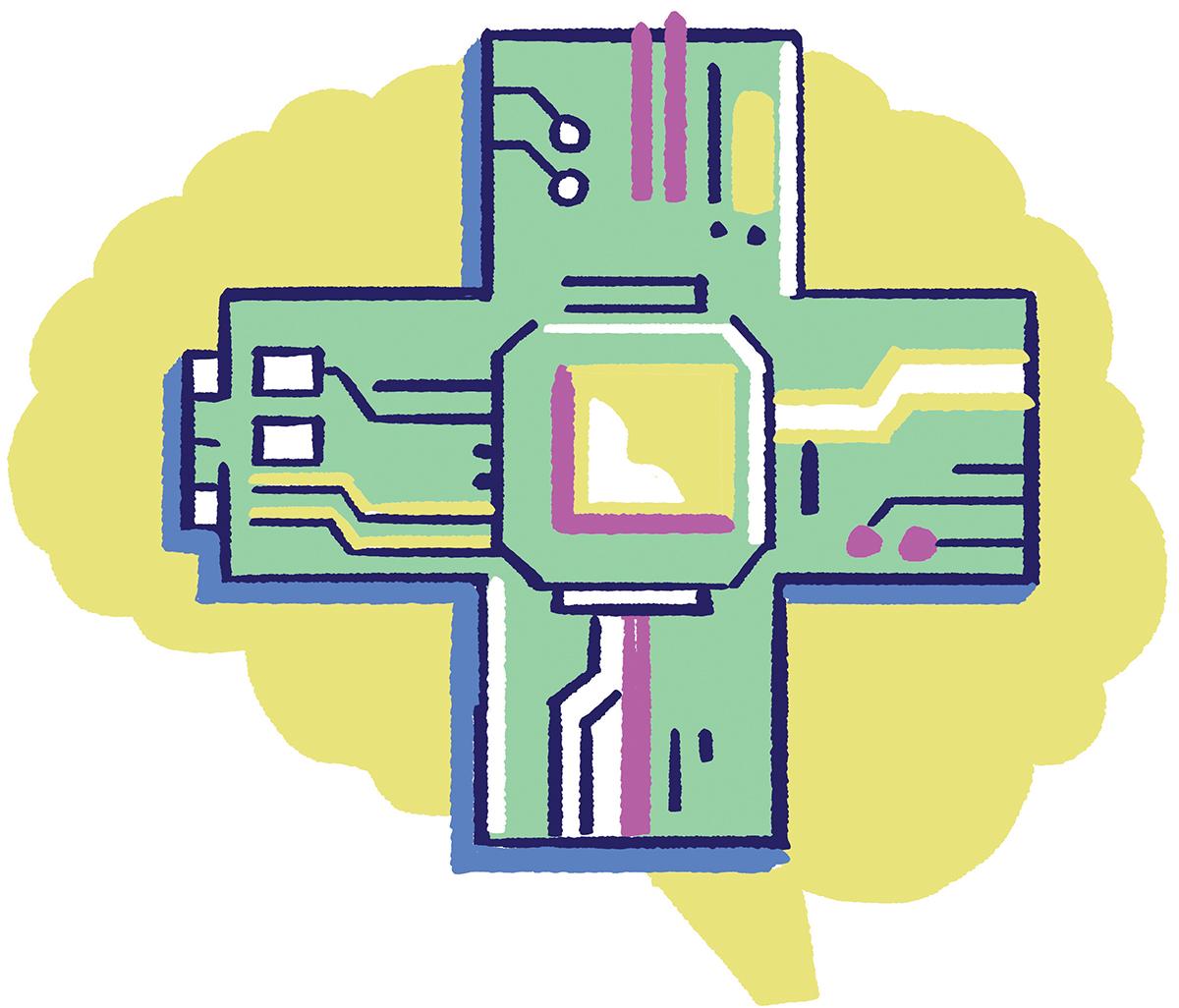
Evolving Graduate Education
From the beginning, Coulter BME created new approaches to teaching and learning in the undergraduate curriculum. And that’s been true for graduate education too. Mike Davis remembers how rigid the curriculum was when he joined the faculty almost two decades ago — highly structured in the way most undergraduate engineering programs are.
Faculty members changed it when they saw that wasn’t meeting the needs of their students. They created integrative cores and advanced seminar courses, building a more open-ended approach for students.
“Not every student interested in cardiovascular wants to learn the same thing,” said Davis, who now leads the Department’s graduate programs. “We care more that our students learn how to solve problems, how to work as teams, how to write grants and papers, rather than whether they can recite some equation from memory.”
Now Davis and Director of Faculty and Student Training Rachael Pitts Hall are listening to students again and shaping the curriculum to meet the needs of a new generation. Davis said more graduate students are interested in industry jobs rather than academia and building skills that match what those positions require. Which means it’s not always just about writing grants and papers.
“What our students have said to us is, they want better presentation skills, better writing skills, they want the ability to communicate more effectively, they want to tackle problem-solving using cutting edge approaches like machine learning and AI because that’s where industries are going,” he explained. “Our students are interested in the tools and the knowledge that will prepare them for the next 25 years of growth, and it’s not always just about whether you know how the cell responds in cell culture.”

Pitts Hall called it “backwards design.” They’ve asked students about gaps, and now they’re working with the faculty to fill them, with new classes in some cases but also adding modules to existing courses or creating workshops around other areas.
“Students are more interested in social justice, and we’re also talking about how to incorporate things like health disparities and aspects of equity that are related to the research and science itself,” Pitts Hall said.
The point is to meet Gen Z students where they are, “helping them be better versions of themselves, instead of a smaller version of their advisor or their mentor.
“BME has a history of figuring out what works in education and trying it, iteratively changing, and adapting,” Pitts Hall said. “We have a great history of that with our undergraduate program, and I’m happy that we are taking on that mantle in the graduate program to really apply some of these research-based methods to meet our students’ needs.”
New Space, New Programs
Meanwhile, a physical manifestation of the future of biomedical engineering education and research has taken shape on the edge of Emory’s campus with construction of the new Health Sciences Research Building II. Designed to be a hub of cross-pollination, the building has significant space for Coulter BME alongside pediatrics, brain health, cardiovascular medicine, and more.
The building was designed to create opportunities for collaborative conversations and encourage new thinking. It also is home to an incubator area to help researchers work with industry to translate their work from the lab to the patient bedside.
The building will be home to a new Coulter BME master’s degree program under development. The Department leads the National Science Foundation Engineering Research Center for Cell Manufacturing Technologies (CMaT) and the Marcus Center for Therapeutic Cell Characterization and Manufacturing at Georgia Tech. The M.S. in Biomedical Innovation and Development – Advanced Therapeutics will leverage that expertise in an industry-focused program to train the next generation of leaders in cell therapy, gene therapy, tissue engineering, and regenerative medicine.
“There are lots of master’s programs around medical devices. There aren’t very many training students to be experts for gene and cell engineered products,” Panitch said. “Couter BME at Emory is the perfect place to launch this innovative program, and with CMaT and the Marcus Center, we can be a leader.”
The new program will be the first Coulter Department master’s based exclusively at Emory, complementing the successful Master of Biomedical Innovation and Development at Georgia Tech that focuses on engineering devices and technology.
Like the Department’s plans for research and education, it will help weave more and tighter connections between two campuses on opposite sides of town but very much aligned in serving Atlanta, the state, the nation, and people around the world.
“We’ve been really intentional about making sure that this is a partnership — one department on two campuses,” Panitch said. “We value both: it’s a great medical school and it’s a great engineering school. We bring the power of both institutions together. We do unbelievable things together.”
(text and background only visible when logged in)
(text and background only visible when logged in)
Related Stories
FDA Approved
Several alumni and faculty members have received FDA approval for devices and procedures in recent years — and are preparing to do it again.
Cancer Fighters
Engineers are rewiring cells and creating new tools to improve cancer therapies and catch the disease earlier.
Keeping People First
BME alumna Parika “Pinky” Petaipimol is inspired to persevere by people she’ll never meet.
(text and background only visible when logged in)
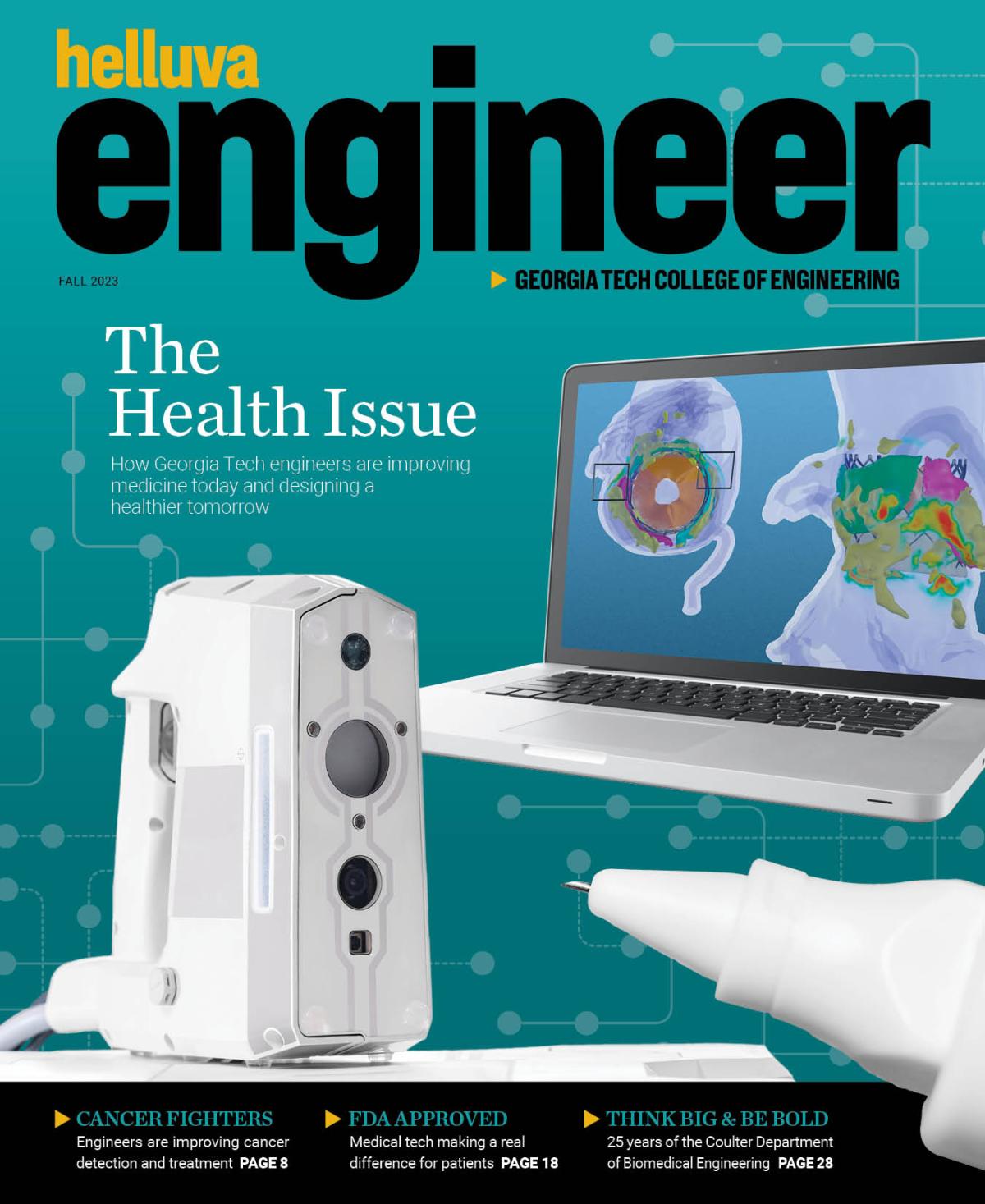
Helluva Engineer
This story originally appeared in the Fall 2023 issue of Helluva Engineer magazine.
With the top biomedical engineering program in the country, it’s only fitting that our rebooted College magazine focuses on health and medicine in our return issue. From cancer to anemia, synthetic biology to eye disease, Georgia Tech engineers are improving medicine today and designing a healthier tomorrow for us all.
